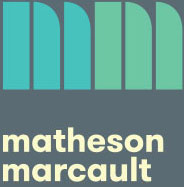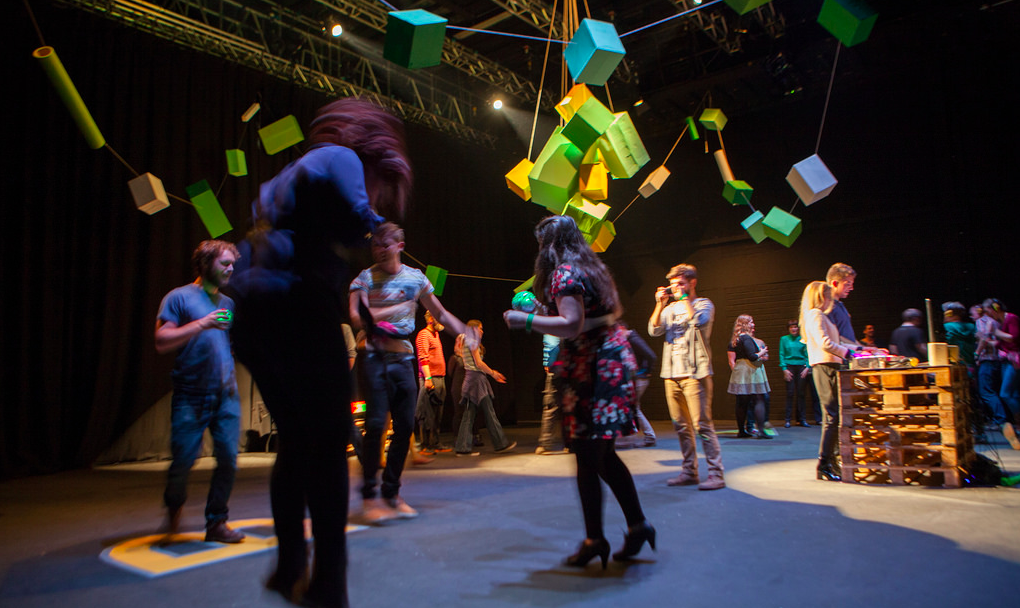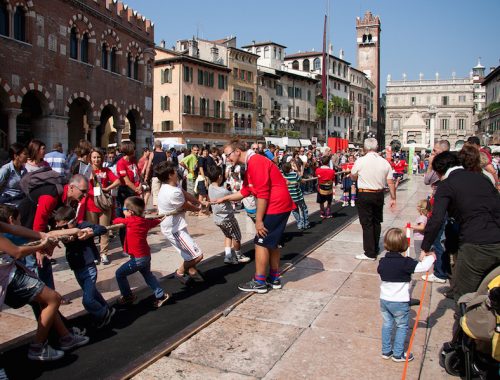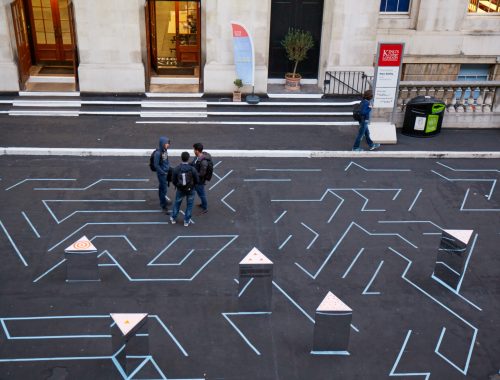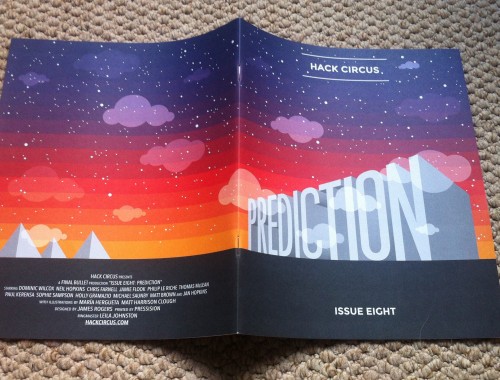As part of our research project for the King’s College London Arts and Humanities Festival, we’ve been interviewing different curators, designers, artists and architects about playful work for public space. This interview is with Hilary O’Shaughnessy, a curator, producer and game designer. She’s made her own games for events, created Prototype Festival in Dublin, and is currently working as a producer for Playable City at the Pervasive Media Studio in Bristol.
The image above shows her game Charge, made with Nicholas Ward, running at Prototype Festival.
This is an extract from a larger interview that we’ll include in the report at the end of the research project. We started out by asking Hilary about her own work creating games for covert groups of players.
US: Your own practice seems to me to be very secretive in its execution. With a lot of your games, you get a group of people, you tell them what to do, then you send them out into public and they have this communal experience played out among oblivious members of the public.
HILARY: I hadn’t thought about that before but I suppose I like subverting what people are looking at, and that’s a way to do it, a way to get them to rethink what they see.
US: People are kept from playing in public sometimes by feeling self-conscious – do you feel like the secrecy helps with that? How do you deal with people – well, not wanting to look silly?
HILARY: That’s an ongoing conversation, really! I’ve disagreed with people like Tassos who’ve said that it’s better to be secret all the time, and I’ve said “no, you don’t have to be!”
I suppose I’m interested in people finding that line for themselves. There’s nothing worse than being forced into a mode in public and I don’t think we are one type of person’ I think we’re one type of player on any particular day. Sometimes I want to be loud, and sometimes I’m not in the mood to be that loud player. It changes all the time so I’m interested in the middle ground. Allowing people to figure out that middle ground themselves. Hopefully if you give a little bit of confusion with that people will actively figure it out.
US: The work you’ve produced for Playable Cities is very much dependent on drawing the attention of passers-by and enticing them into play – it’s not necessarily a thing people set out to play in the same way that games within your own practice tend to be.
HILARY: For sure, something like Urbanimals people would have encountered it maybe on their way to work. It’s about unexpected interactions that break up the everyday as opposed to “we’re going here to do this thing, I know I’m entering into this thing”.
And yeah, it’s a very tough line because you want to invite people in but you want to also invite people to say no or allow them to say “I’m not into this right now”. It’s sometimes very hard to convince people that that’s not a failure. If people just stand and look, you know, that’s actually perfectly fine. We’re not tracking people all the time. You might look one time and play another day. I might look one day when there’s loads of people watching me and I don’t want to hop around but another day I might be on my own or in a different mood and want to play.
But also you find yourself asking: if everyone just stands and looks at a project and they don’t play then is it just crap? Where’s my line of deciding that this works or doesn’t? One of the most interesting learnings from something like Urbanimals, where we installed animals in different, places is: how do you invite people into that interaction? Are there determinant instructions? If there are, are you then just saying “do A, do B”?
When you compare something like that to something like Shadowing [where lamp-posts played back recorded “shadows” of people who’d passed under them before], it’s an unfair comparison. People already know how to behave under a lamp-post, they know what to do – so even subverting that is easier. If you see something like a projected rabbit and have no context for that in real life, then how do you know how to play with it?
So it’s really hard. And again it’s very hard to find a balance – especially as I wasn’t making the project, someone else was making it.
US: So it comes back to the question of how stopping and thinking about something is a way to engage. As creators of games we have to constantly think about what sort of engagement we’re happy with, what “counts” – looking is interesting and good but we wouldn’t usually be happy if people only looked, right? But at the same time we don’t want to go “people must all play for 45 seconds or what’s even the point”.
HILARY: And it’ll change for each piece of work!
At the same as I say “well looking at it might be an okay response”, I have also found myself shouting at people “you have to play it or you can’t judge”. It’s like closing the book and going “well I know what the story is”. So there are definitely two sides.
US: If we return for a moment to the question of how to get people who are just walking about to stop and play – well you’ve made and produced games for a load of places now, there’s London and Bristol and Dublin and Krakow and Lagos just as the ones I know about off the top of my head. To what extent are the things you learn about playing in one city transferable to others?
HILARY: I think… it’s really generalised rules. I think don’t assume you know how people will behave in a new place, and don’t assume anyone knows. Especially when you come to a new city for two weeks, people say things like “people in Krakow do this”. They might be right, but they also might be massively wrong. It might just be the way they encountered people or the way they make things that makes people behave like that rather than absolute truth.
US: So you would be wary of working somewhere for a day or a week and jumping to conclusions about what it’s like.
HILARY: Yeah. And it’s important to get as many different voices as you can – that’s a good rule to be strict about. For example we did Playable Cities Lagos [a project to try out prototypes of playable interactions in Lagos]. We had seven participants from Lagos and they each spoke about their city for 20 minutes, and they disagreed passionately with one another. It was meant to be an introduction to the city, not a big deep “these are problems with the city” discussion, but they all argued passionately so we got a good sense of the place. Don’t just listen to one person, listen to five.
